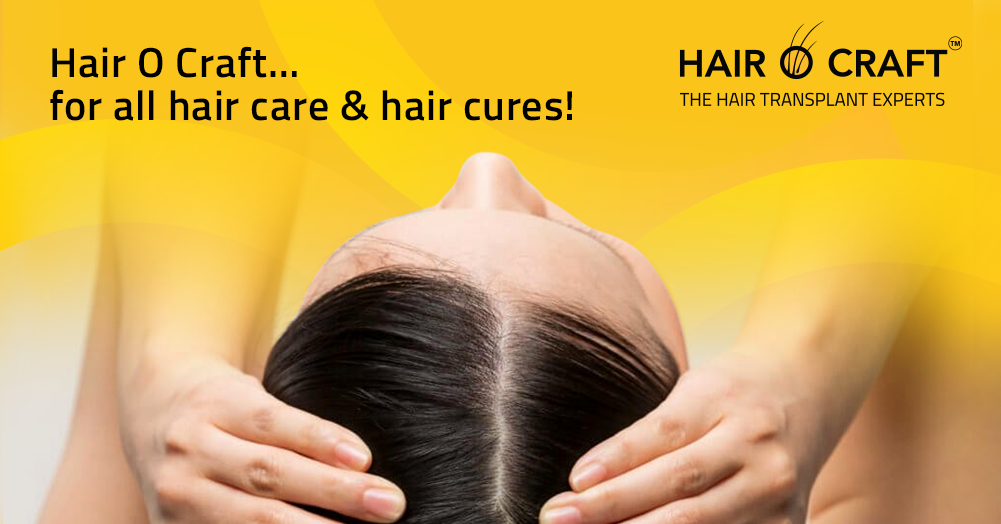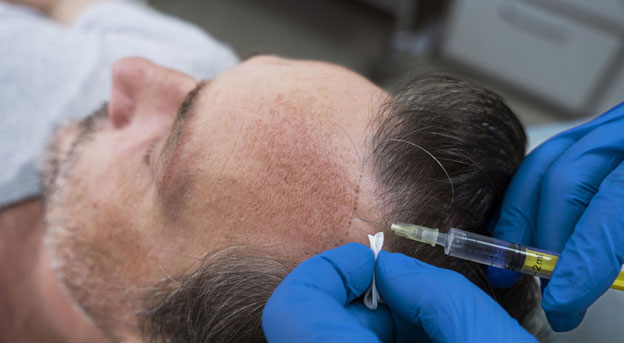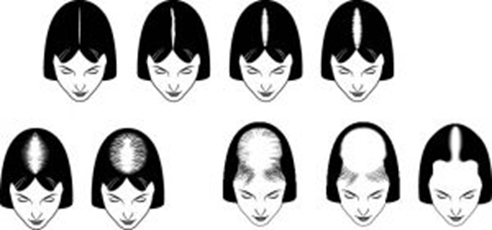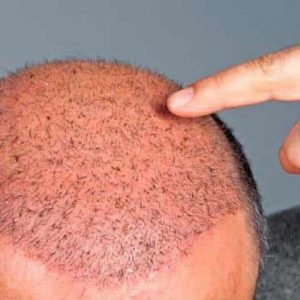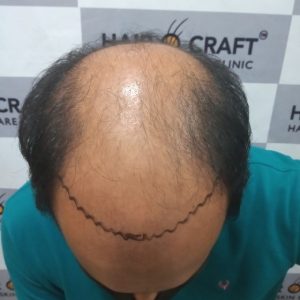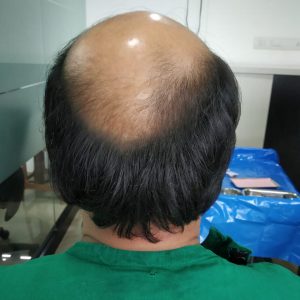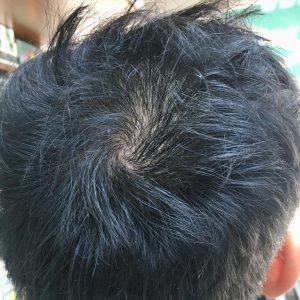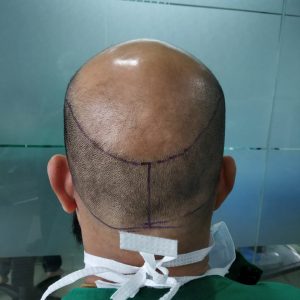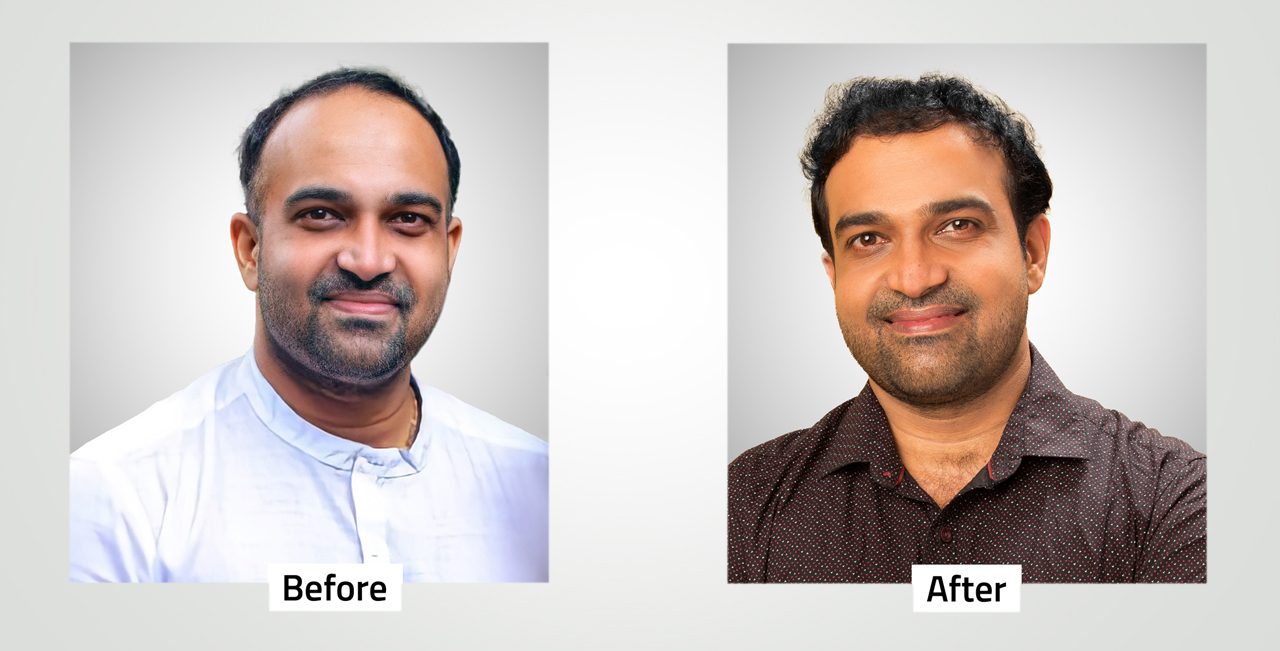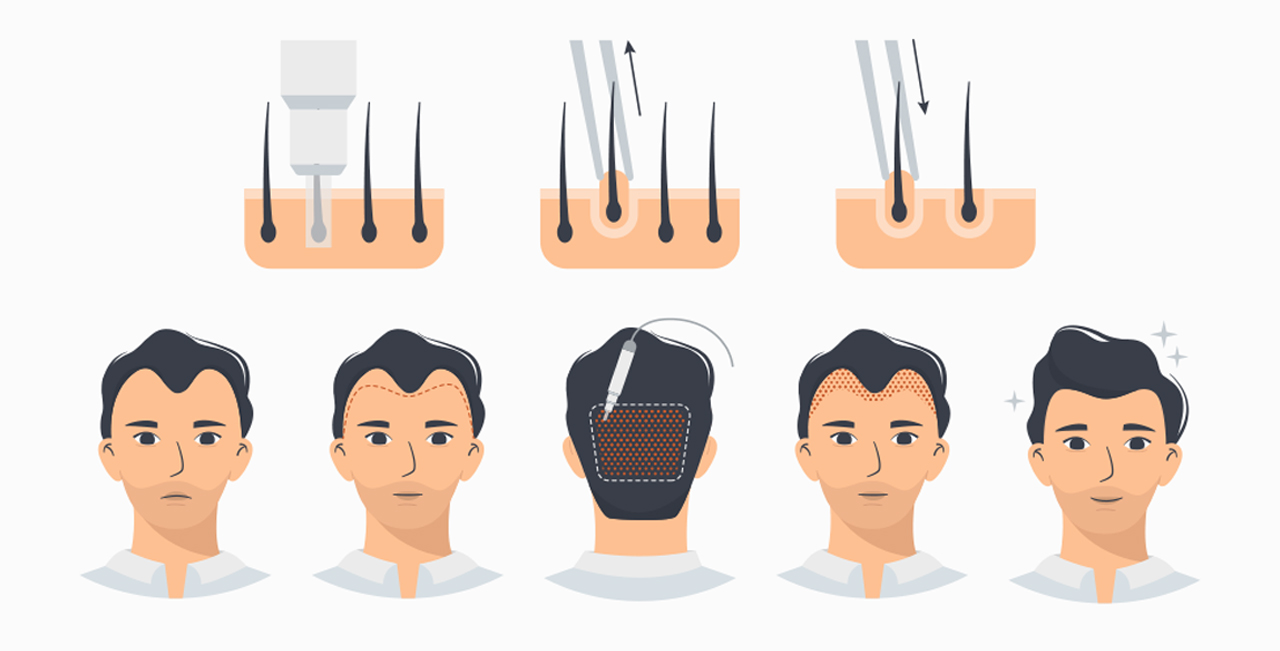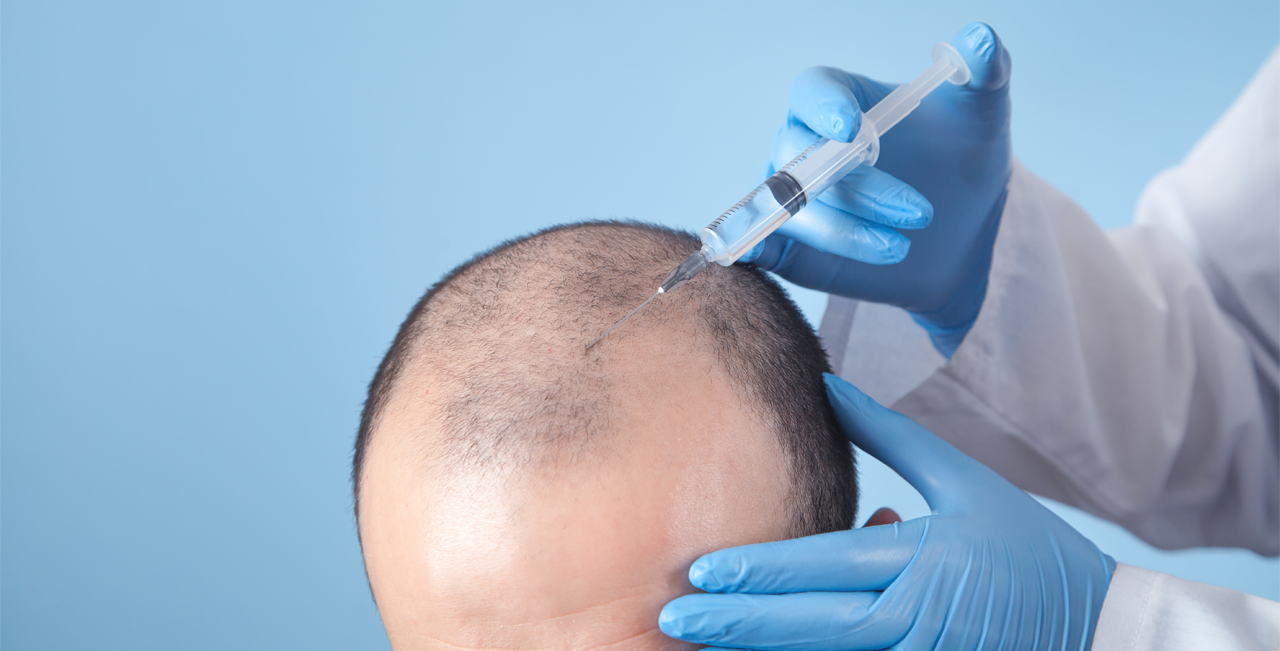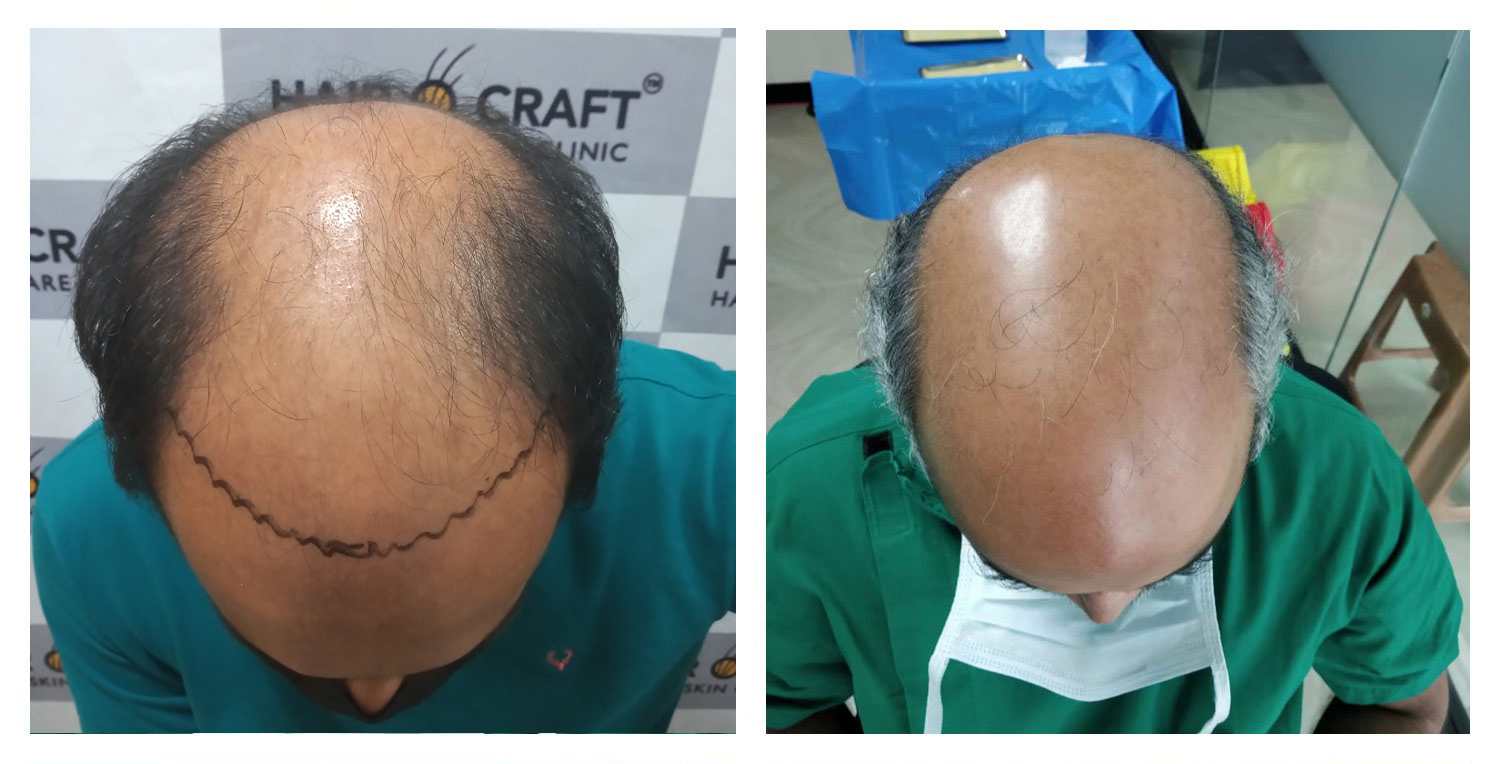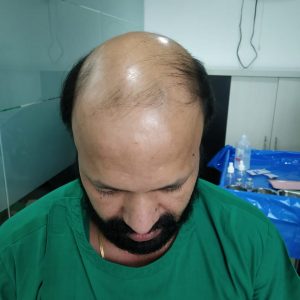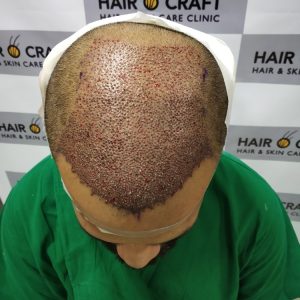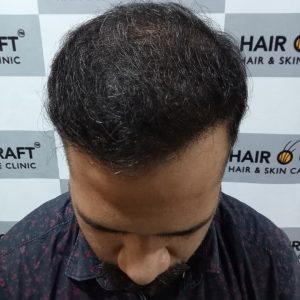HAIR TRANSPLANT
A hair transplant is a type of hair restoration surgery in which healthy hair growing on the back and the side of the head, the so-called donor area, is transplanted to the areas of the scalp that suffer from hair loss. Unlike the hair on top of the scalp, the donor hair growing on the back and side is immune to the damaging effects of DHT, an androgen that causes male pattern baldness. We are dedicated to provide our patients with the most effective hair restorations, with minimally invasive approaches and advanced techniques.
1. PRP
Platelet-rich plasma (PRP) , a part separated out of one’s own blood that promotes healing when injected. Plasma in the blood contains proteins that which help both in preventing hair loss and promoting hair growth. PRP also supports in the stimulation of hair growth after hair transplantation. PRP is a procedure with low risk and side effects as the PRP injections are made from own blood. The procedure includes drawing blood from one’s body centrifuging it to separate the platelet rich plasma and injecting ion the scalp and so the patient who is getting ready for the PRP treatment should be hydrated.
What is PRP treatment?
Platelet rich plasma (PRP) is defined as antilogous concentration of plasma with a greater count of platelets than that of whole blood. The action of PRP depends on the released growth factor from platelets. PRP has received growing attention as a potential therapeutic tool for hair loss. Your scalp will be numbed and sometimes there will be a micro-needling step where your specialist creates superficial incisions along your thinning hairline and then the platelet solution is injected over and into those incisions. PRP is considered safe when performed at a certified facility.
What is the procedure for PRP?
PRP is still technically an experimental treatment. For the preparation initially whole blood is collected from the patients vein (about 16Ml). The samples collected will be centrifugated. So that the blood collected will be separated into various components; red and white blood cells, plasma, platelets etc. The platelets are collected and concentrated. The platelets are then mixed into a blood plasma liquid base and injected directly into the desired area.
Who should opt for PRP?
You can be anywhere from 18 to your 70s to get PRP therapy. Individuals experiencing early stage hair thinning or hair loss can benefit from PRP therapy. It can promote hair follicle health and stimulate hair growth. Certain factors like the medical history, current health issues, the treatment goals to be considered. If you have a low platelet count, you should consider a different treatment, as well. Preparing for your PRP therapy treatments should be intentional. Slow down with or cut out alcohol, cigarettes, and caffeine 2 days before and after treatment.
Are the results of PRP guaranteed?
PRP treatments work by releasing growth factors into the injected area. PRP results are guaranteed. It again depends upon how much hair loss and what area of scalp an individual losing hair. The results may vary from person to person. It has to be done at least 3 months to produce the results. By getting a blood sample from your body and processing it until only a pure platelet concentrate remains, PRP providers can inject this serum back into your body to improve your wound healing, speed up cell growth, and release growth factors to help repair and rejuvenate your system.
Advantages of PRP
Advantages of PRP include that there is no surgerical process, incisions required. The recovery period is very short. PRP is one of the safe and reliable procedures. And the end results in natural looking hair. This is one of the safest treatments out there for addressing hair issues. Being non-invasive and non-surgical definitely helps, but the biggest reason for this procedure to be so safe is because you use your own body cells. Moreover, there is no possibility of contamination as there are no other entry points apart from the injection.
2. GFC
GFC is a non-surgical treatment that uses your blood platelets to stimulate hair growth. It is completely safe and improves the thickness and density of hair in thinning or affected areas by injecting growth factors and enhancing the overall blood supply in that area. Blood Platelets are enriched with various growth factors. The collected GFC is then administered at the site to be treated with precise tools and specialists. The overall process involves no platelet loss and is non-pyrogenic, secure, and regenerates damaged tissues naturally.
What is GFC treatment?
Various growth factors are stored in blood platelets, which help regenerate and repair the tissues and stem cell proliferation, migration, and differentiation. Thus, each GFC plays a different role in fighting hair loss. Helps increase hair growth and works as a stimulator for Vascularisation and Angiogenesis. It also helps in the mitogenesis of mesenchymal stem cells and endothelial cells and proliferation and chemotaxis of fibroblasts. VEGF is expressed in DP cells in the anagen phase of hair and regulates perifollicular angiogenesis in hair. It also increases perifollicular vessel size during the antigen growth phase to make the process smooth.
What is the procedure for GFC?
The blood is collected from the veins. Then the blood will be left in test tube for activation. This GFC is injected into the scalp, giving high concentrations of a person’s natural growth factors like platelets for hair growth, vascular endothelial growth factor, insulin-like growth factor directly to the hair root, promoting hair regeneration. Approximately 16 ml of a person’s own blood is needed to manufacture GFC for hair loss procedure. The process takes about 40 minutes to produce about 7-8 ml of final ready-to-inject GFC output. As determined by the treating doctor, any candidate with alopecia in the early or late stages is a good candidate for GFC treatment, which is equally beneficial in both men and women.
Who should opt for GFC?
You can be anywhere from 18 to your 70s to get PRP therapy. Individuals experiencing early stage hair thinning or hair loss can benefit from PRP therapy. It can promote hair follicle health and stimulate hair growth. At some point in our lives, we all experience thinning of hair. Usually, for women, this happens a little later in life. For men, it can be much earlier than anticipated. If you notice thinning of your hair, then it is important to take preventive action immediately.
Are the results of GFC guaranteed?
Experiencing seasonal hair loss can be a common concern for individuals, irrespective of gender and age. GFC treatment is the best solution for people who have to deal with patterned baldness, for which they need to seek hair restoration treatments. Although GFC treatment’s success rate is high, it varies from one individual to another based on different parameters, such as the following Underlying hair loss issues and causes, the health condition of the individual, commitment to the treatment and healing plan.
Advantages of GFC
Anyone could feel lost losing their hair disappointing. Well, who enjoys losing their hair? GFC promotes natural and improved regeneration and is safe and effective. It revives hair follicles and lessens hair loss. The procedure reinforces hair transplants and promotes hair growth. It does add quantity and thickness of hair. With fewer outcomes we can see the results. Less likelihood of discomfort and inflammation due to the absence of RBC’s and WBC’s count.
3. MESOTHERAPY
Mesotherapy has received a lot of publicity in the media and internet about its possible role in hairloss. Mesotherapy for hair is a treatment method where you inject vitamins, minerals, and amino acid that are necessary for hair growth into the scalp. Mesotherapy, a technique involving injections of medications directly into the skin. The term mesotherapy was coined to denote “treatment of the mesoderm”.
What is Mesotherapy treatment?
Mesotherapy a treatment that biologically activates hair cells through small injections, which are totally painless and subcutaneous. It reverses follicle shrinkage and boosts hair thickness and growth. One of the great things about hair mesotherapy is that it is perfectly compatible with hair transplantation. The compounds used in mesotherapy treatment nourish the scalp and boost hair thickness and growth, thus helping to prevent hair loss. It promotes regeneration and encourages hair growth; it’s a very useful option with zero risk for patients.
What is the procedure for Mesotherapy?
Doctors inject different substances depending on the condition of the patient. The substances may be solutions like herbal extracts, vitamins and minerals, enzymes such as collagenase and hyaluronidase, hormones like calcitonin and thyroxin and prescription medicines like vasodilators and antibiotics. A mechanical gun may be used to deliver many injections in a row. The patient may have to undergo several sessions of mesotherapy to achieve the desired results. Initially, you will be given injections every 7-10 days. Once your skin starts to improve the time period between the sessions will become two weeks and slowly a month.
Who should opt for Mesotherapy?



